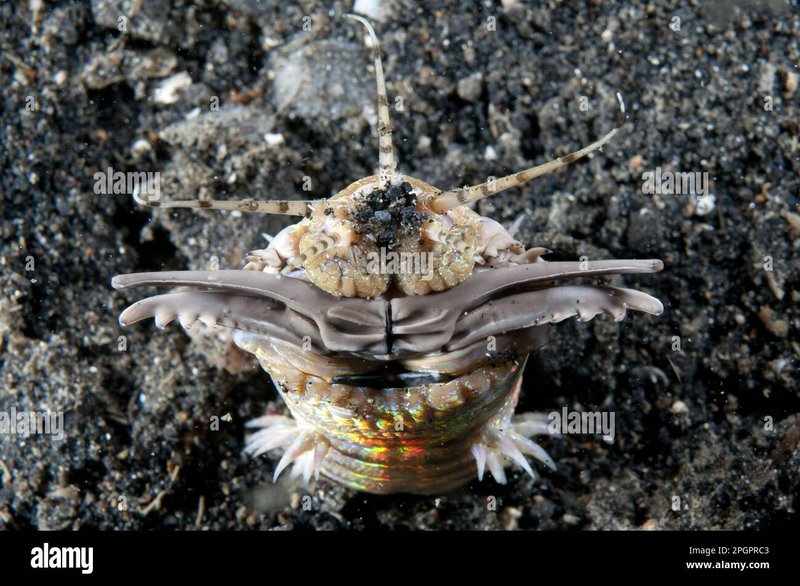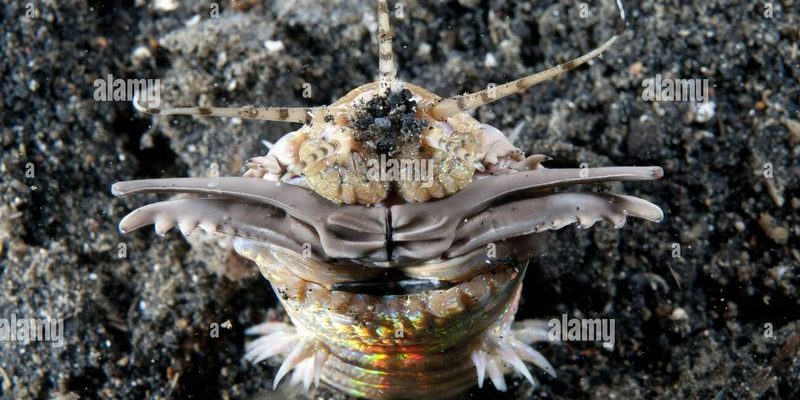
Now, you might wonder why night cameras are the tool of choice for this underwater exploration. The truth is, traditional observation methods don’t always capture the magic of the night. With advanced technology, like the **GoPro Hero series** or **infrared night vision cameras**, researchers can document the Bobbit worm’s actions in real-time, giving us insights that were previously hidden from view. These cameras reveal behaviors that could change our understanding of these remarkable creatures.
Why Study Bobbit Worms?
You may be asking yourself, “What’s so special about Bobbit worms anyway?” Well, apart from their eye-catching appearance—resembling a long, segmented snake with fierce jaws—they offer us insights into marine ecosystems. Bobbit worms play a crucial role as predators, helping maintain the balance of life on the ocean floor.
Understanding their behavior can inform conservation efforts and improve our knowledge about biodiversity. By monitoring them, we can also see how they interact with other species, providing a fuller picture of the underwater world. Plus, isn’t it just fun to peek into the lives of these elusive creatures?
The Technology Behind Night Cameras
Let’s talk about the tools that bring Bobbit worms into focus. Night cameras, especially those designed for underwater use, are equipped with features that make them ideal for this kind of monitoring. Many modern night vision cameras, like the **Sony Action Cam**, come with high-resolution sensors and infrared capabilities, allowing them to capture clear footage even in complete darkness.
Here’s how they work:
- Infrared Sensors: These sensors pick up light that’s invisible to the naked eye, allowing the camera to capture images in low-light conditions.
- High Resolution: Many night cameras offer 4K resolution, ensuring that even the tiniest details of the Bobbit worm are visible.
- Waterproof Design: Since these worms dwell in the ocean, the cameras need to be waterproof, allowing researchers to film in their natural habitat without disruption.
- Remote Control Features: Some cameras can be controlled remotely, making it easy for scientists to adjust angles or start recording without disturbing the environment.
Honestly, having the right technology makes a huge difference in how we observe these creatures and understand their behaviors.
Setting Up Your Night Camera for Monitoring
Ready to start your own Bobbit worm observations? Here’s how to set up your night camera effectively:
1. **Choose the Right Location:** Look for spots where Bobbit worms are known to inhabit. They often burrow into sandy substrates, so setting your camera near these areas is key.
2. **Proper Lighting:** If your camera allows, use soft white lights or take advantage of the camera’s infrared capabilities. This reduces the risk of startling the worms, ensuring you get natural behavior on film.
3. **Secure the Camera:** Make sure your camera is stable and won’t be easily moved by currents. Some even use underwater tripods specially designed for marine environments.
4. **Timing is Everything:** Night monitoring can yield the best results. The Bobbit worm’s predatory behaviors often peak during the darker hours, so plan your observations accordingly.
What to Expect When Monitoring Bobbit Worms
When you finally kick off your monitoring session, expect to see some pretty interesting stuff. Bobbit worms are known for their ambush predation, where they hide just beneath the sand, waiting for prey to come close. You might witness them:
- Striking with Speed: Their quick, powerful strikes can catch fish and other small creatures off guard.
- Burrowing: They may dig deeper into the sand, using their segmented bodies to maneuver with incredible agility.
- Using Camouflage: Observing how they blend in with their surroundings offers a fascinating look at their survival tactics.
Here’s the thing: every observation can teach us something new. The footage collected can lead to better theories about their hunting strategies, reproduction, and even their responses to environmental changes.
Common Challenges When Using Night Cameras
While monitoring Bobbit worms with night cameras sounds simple, a few challenges can arise. Here are some common issues you might face along with solutions:
1. **Camera Malfunctions:** Technology isn’t perfect. If your camera freezes or stops recording, double-check the battery and reset it. Most modern cameras have troubleshooting guides available for easy fixes.
2. **Water Damage:** Always ensure your camera is properly sealed. If you’re using a remote control model, check that it syncs well to avoid missed moments in case of connection issues.
3. **Visibility Issues:** If the footage is too dark, try adjusting the camera angle for better lighting or repositioning it to capture a wider field of view.
4. **Disruptions from Currents:** If you notice the camera gets shifted, consider anchoring it with weights or placing it in a more sheltered spot.
Contributing to Marine Research
By monitoring Bobbit worm behavior using night cameras, you’re not just being a curious observer—you’re contributing to marine science! The data collected can help researchers understand not just the Bobbit worm but the entire ecosystem they inhabit.
Your findings can support conservation efforts, inform ecological studies, and even assist in the broader conversation about ocean health. Sharing your insights with local marine biology groups or online communities can amplify your impact.
Venturing into the world of Bobbit worms with night cameras is a thrilling experience. It opens up a new dimension of marine research and gives you a chance to connect with nature in a way that few people ever do.
As you set out to capture the wonders of these elusive creatures, remember: the journey is as valuable as the findings. From the technology you use to the insights you gain, every step adds depth to your understanding of the underwater world. So, grab your camera, find a good spot, and prepare for an adventure beneath the waves!

